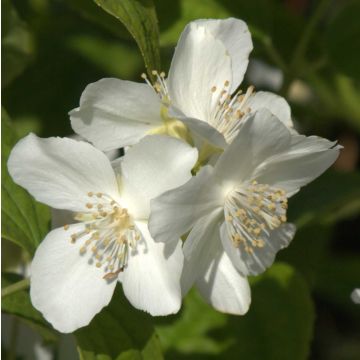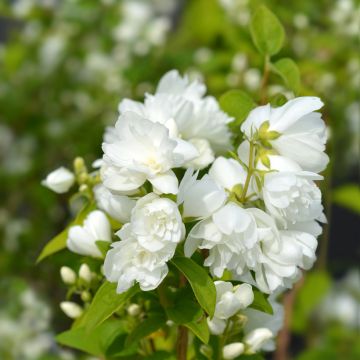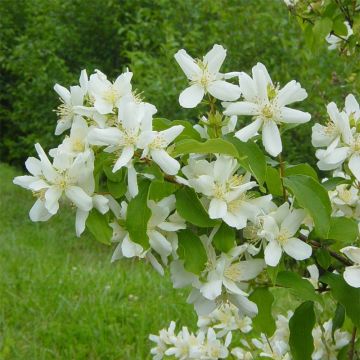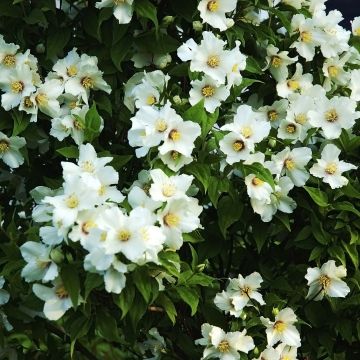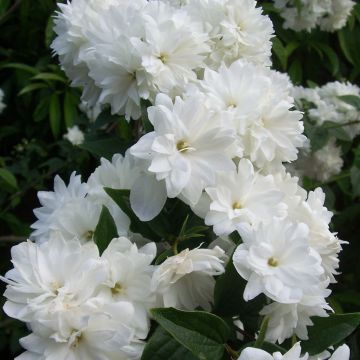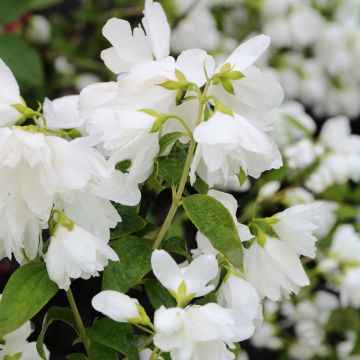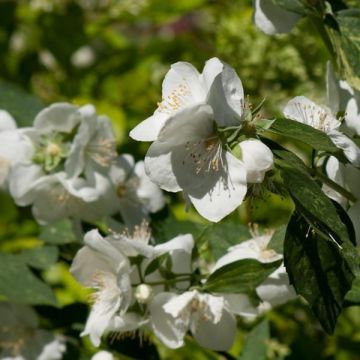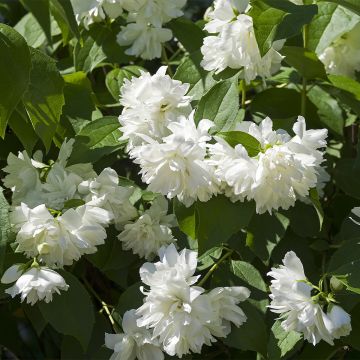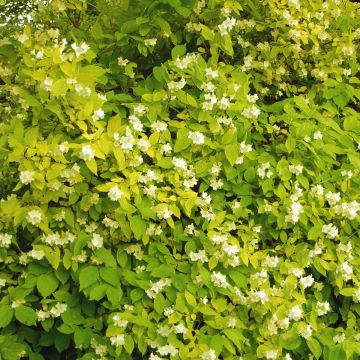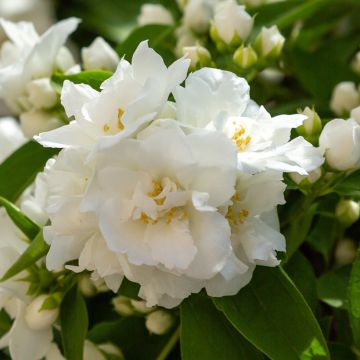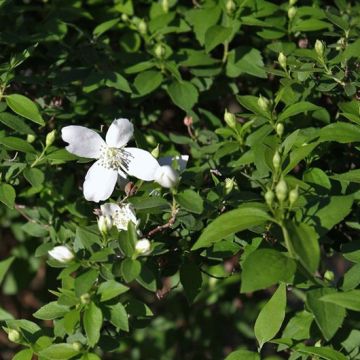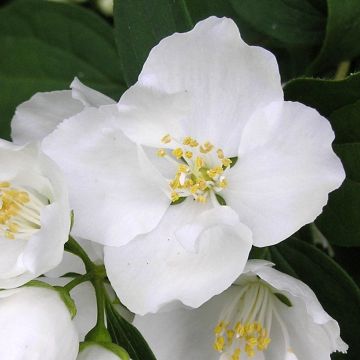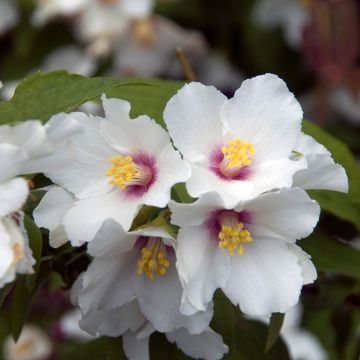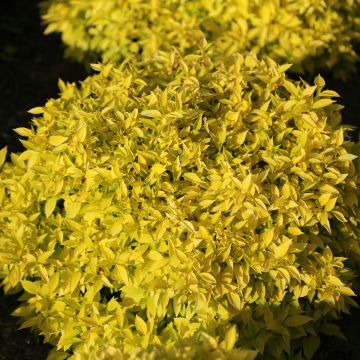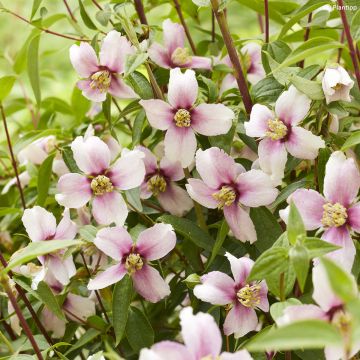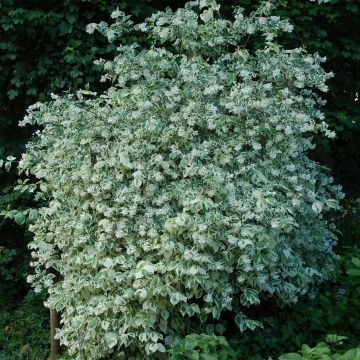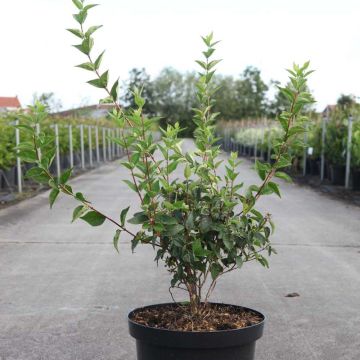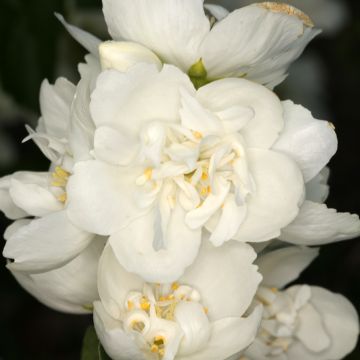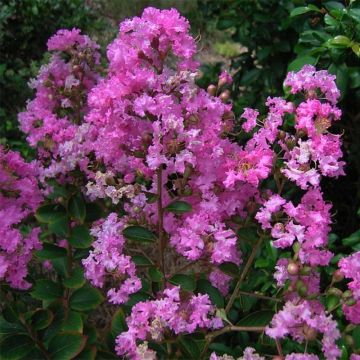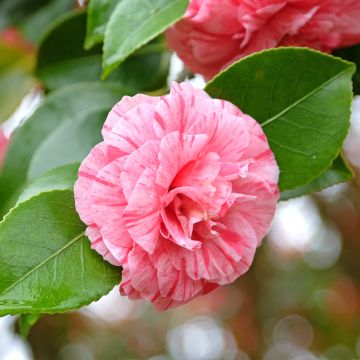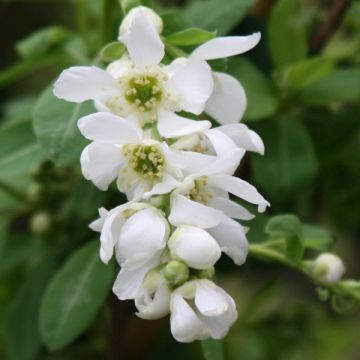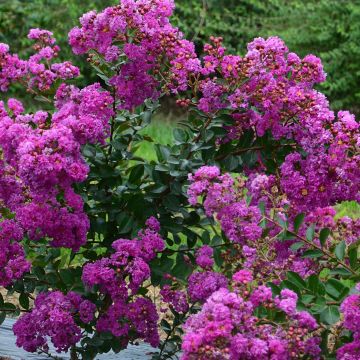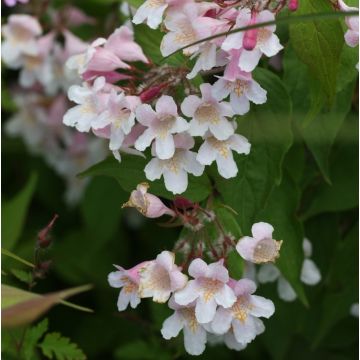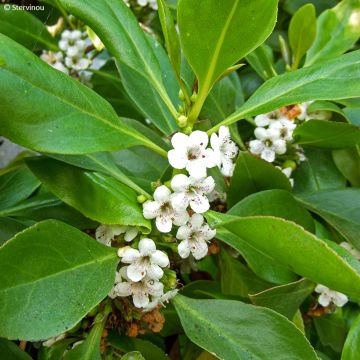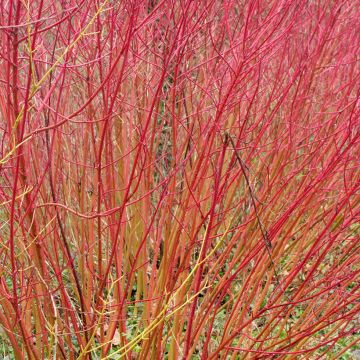

Philadelphus coronarius Godzisz - Mock Orange
Philadelphus coronarius Godzisz - Mock Orange
Philadelphus coronarius Godzisz
Mock Orange, Sweet Mock Orange, English Dogwood
Why not try an alternative variety in stock?
View all →This plant carries a 24 months recovery warranty
More information
We guarantee the quality of our plants for a full growing cycle, and will replace at our expense any plant that fails to recover under normal climatic and planting conditions.
From €5.90 for pickup delivery and €6.90 for home delivery
Express home delivery from €8.90.
Does this plant fit my garden?
Set up your Plantfit profile →
Description
The Philadelphus coronarius 'Godzisz' is a variety of mock orange selected for its vigor and floribundity, rare in cultivation. It is a large deciduous bush that offers a divinely scented cream-white flowering in June, more generous than that of the classic Philadelphus coronarius. Its charm will operate in a large flowering hedge or in a shrub border, in all our regions.
The Philadelphus coronarius 'Godzisz' is a Polish horticultural variety almost unknown in Western Europe. Belonging to the hydrangea family, the Philadelphus coronarius, also known as mock orange or poet's jasmine, is a botanical species native to Southern Europe and Asia Minor. The 'Godzisz' cultivar is a vigorous deciduous bush that reaches a height of about 3m with a spread of 1.75m. It produces numerous clusters of single, cream-white flowers with 4 petals, 2.5cm in diameter, with yellow stamens, and highly fragrant, between late May and early July. In this 'Godzisz' variety, the flowers are more abundant than in the typical variety. The leaves are ovate, 5 to 8cm long, pointed, with small teeth along the edges. The foliage is a medium green colour. This deciduous foliage falls in autumn.
This robust and undemanding poet's jasmine, Godzisz, is suitable for both experienced and novice gardeners. It withstands both cold and dry summers. Plant it in a hedge with weigelas, butterfly bushes, lilacs of intermediate size, or large rose bushes for hedges, for example. Let an Italian leather flower clematis climb into its branches, giving it a wild and charming look.
In ancient Persia, the white and fragrant flowers of the Philadelphus coronarius were used to make fragrant crowns.
Report an error about the product description
Plant habit
Flowering
Foliage
Botanical data
Philadelphus
coronarius
Godzisz
Hydrangeaceae
Mock Orange, Sweet Mock Orange, English Dogwood
Cultivar or hybrid
Other Philadelphus - Mock Orange
Planting and care
The Philadelphus coronarius 'Godzisz', very easy to grow, requiring very little maintenance and very accommodating, is an ideal bush for beginner gardeners. Ordinary soil, even limestone and dry in summer, will be accepted. However, it will prefer a fresh, well-drained and humus-bearing soil. Very hardy, it can withstand negative temperatures down to -20°C and more. Planting is done in early spring or autumn, in full sun or partial shade.
Flowering on the previous year's shoots, Philadelphus coronarius should be pruned after flowering, in July-August, by shortening the flowering branches by one third of their length. A more severe pruning can be done every 2 to 3 years, in order to keep it compact and very floriferous. Simply do not hesitate to cut the old wood and too long branches down to the base of the plant to encourage branching from the base. A resistant bush, it can however be subject to powdery mildew and black aphids.
Planting period
Intended location
Care
This item has not been reviewed yet - be the first to leave a review about it.
Hedge shrubs
Haven't found what you were looking for?
Hardiness is the lowest winter temperature a plant can endure without suffering serious damage or even dying. However, hardiness is affected by location (a sheltered area, such as a patio), protection (winter cover) and soil type (hardiness is improved by well-drained soil).

Photo Sharing Terms & Conditions
In order to encourage gardeners to interact and share their experiences, Promesse de fleurs offers various media enabling content to be uploaded onto its Site - in particular via the ‘Photo sharing’ module.
The User agrees to refrain from:
- Posting any content that is illegal, prejudicial, insulting, racist, inciteful to hatred, revisionist, contrary to public decency, that infringes on privacy or on the privacy rights of third parties, in particular the publicity rights of persons and goods, intellectual property rights, or the right to privacy.
- Submitting content on behalf of a third party;
- Impersonate the identity of a third party and/or publish any personal information about a third party;
In general, the User undertakes to refrain from any unethical behaviour.
All Content (in particular text, comments, files, images, photos, videos, creative works, etc.), which may be subject to property or intellectual property rights, image or other private rights, shall remain the property of the User, subject to the limited rights granted by the terms of the licence granted by Promesse de fleurs as stated below. Users are at liberty to publish or not to publish such Content on the Site, notably via the ‘Photo Sharing’ facility, and accept that this Content shall be made public and freely accessible, notably on the Internet.
Users further acknowledge, undertake to have ,and guarantee that they hold all necessary rights and permissions to publish such material on the Site, in particular with regard to the legislation in force pertaining to any privacy, property, intellectual property, image, or contractual rights, or rights of any other nature. By publishing such Content on the Site, Users acknowledge accepting full liability as publishers of the Content within the meaning of the law, and grant Promesse de fleurs, free of charge, an inclusive, worldwide licence for the said Content for the entire duration of its publication, including all reproduction, representation, up/downloading, displaying, performing, transmission, and storage rights.
Users also grant permission for their name to be linked to the Content and accept that this link may not always be made available.
By engaging in posting material, Users consent to their Content becoming automatically accessible on the Internet, in particular on other sites and/or blogs and/or web pages of the Promesse de fleurs site, including in particular social pages and the Promesse de fleurs catalogue.
Users may secure the removal of entrusted content free of charge by issuing a simple request via our contact form.
The flowering period indicated on our website applies to countries and regions located in USDA zone 8 (France, the United Kingdom, Ireland, the Netherlands, etc.)
It will vary according to where you live:
- In zones 9 to 10 (Italy, Spain, Greece, etc.), flowering will occur about 2 to 4 weeks earlier.
- In zones 6 to 7 (Germany, Poland, Slovenia, and lower mountainous regions), flowering will be delayed by 2 to 3 weeks.
- In zone 5 (Central Europe, Scandinavia), blooming will be delayed by 3 to 5 weeks.
In temperate climates, pruning of spring-flowering shrubs (forsythia, spireas, etc.) should be done just after flowering.
Pruning of summer-flowering shrubs (Indian Lilac, Perovskia, etc.) can be done in winter or spring.
In cold regions as well as with frost-sensitive plants, avoid pruning too early when severe frosts may still occur.
The planting period indicated on our website applies to countries and regions located in USDA zone 8 (France, United Kingdom, Ireland, Netherlands).
It will vary according to where you live:
- In Mediterranean zones (Marseille, Madrid, Milan, etc.), autumn and winter are the best planting periods.
- In continental zones (Strasbourg, Munich, Vienna, etc.), delay planting by 2 to 3 weeks in spring and bring it forward by 2 to 4 weeks in autumn.
- In mountainous regions (the Alps, Pyrenees, Carpathians, etc.), it is best to plant in late spring (May-June) or late summer (August-September).
The harvesting period indicated on our website applies to countries and regions in USDA zone 8 (France, England, Ireland, the Netherlands).
In colder areas (Scandinavia, Poland, Austria...) fruit and vegetable harvests are likely to be delayed by 3-4 weeks.
In warmer areas (Italy, Spain, Greece, etc.), harvesting will probably take place earlier, depending on weather conditions.
The sowing periods indicated on our website apply to countries and regions within USDA Zone 8 (France, UK, Ireland, Netherlands).
In colder areas (Scandinavia, Poland, Austria...), delay any outdoor sowing by 3-4 weeks, or sow under glass.
In warmer climes (Italy, Spain, Greece, etc.), bring outdoor sowing forward by a few weeks.

































